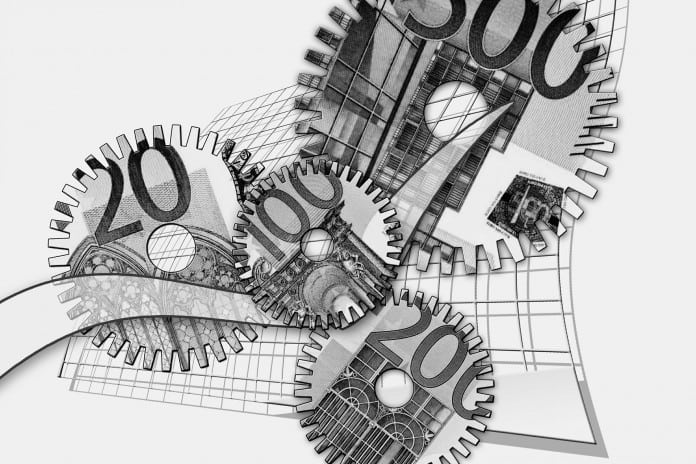
The GCC states are likely to face economic challenges this year due to the increased risk of a global economic slowdown created by global central banks’ drive to “normalize” interest rates very late in the business cycle, according to Steen Jakobsen, Chief Economist and CIO of Saxo Bank, the online trading and investment specialist.
The recent pickup in US inflation, which the US Federal Reserve will use as an excuse to tighten monetary policy further, happens while economic data is factually slowing down, mainly driven by less credit volumes combined with higher interest rates. “We believe there is a risk of a global slow-down and even a risk of a global recession within the next twelve months,” said Jakobsen. “We accept headline inflation will be up over the next few months but this will almost entirely be driven by oil prices seeing year-on-year increases. Meanwhile ‘real inflation’, which originates from the velocity of money and the net lending demand on banks, is almost at zero from a double-digit level seen as recently as 2016.”
“The GCC region runs on a relatively high debt leverage and the recent increase in funding costs may lead to a substantial economic slowdown in growth which, combined with several reforms across the region, could lead to negative growth surprises.”
Speaking from Saxo Bank’s office in the Dubai International Financial Centre (DIFC), Jakobsen added: “Even before the external factors are considered, we can see the region is in the midst of change. We expect to see lower growth and WTI Crude prices on the back of this, which could unfortunately reverse some of the excellent results achieved on controlling fiscal spending across the region.”
Ole Hansen, Head of Commodity Strategy, further explained that he expects the crude oil market to remain range-bound between $70 and $55 a barrel for the time being, which will not be supportive for regional economies. Hansen said: “A weaker dollar driven by increased concerns about the US economic outlook is not a strong enough foundation from where a price recovery can be established. On that basis we expect the market to remain range-bound for the time being.”
The outlook for global supply and demand shows a trend towards rising non-Opec supply and continued steady demand. Such rising of non-Opec supply carries risk and potentially challenges unity among the Opec+ group, which could also impact future oil prices.
Hansen added: “Now that Opec and Russia have promised to keep production capped, the oil price this year is going to be mostly influenced by the production response to higher prices, especially from US shale oil producers. The risk of new supply disruptions and whether the global economy lives up to growth expectations are very real considerations for regional economies.”
If energy prices continue falling over the next 10 years, GCC countries will face balancing continued progress on reduced fiscal spending with investment in alternative sectors to boost productivity, maintained Jakobsen: “I firmly believe that the oil price over the next 10 years will be in a range between highs of $65 and lows of $25 a barrel, averaging $40 a barrel for WTI Crude Oil. This range means the GCC countries may need to adjust their economic models to be able to exist over the long-term with an average $40 oil price, as well as weather an occasional $25 low.
“I reiterate what I have previously stated and that is the next two years in the Middle East region will decide not only the next 10 years but probably many decades to come. The GCC has the will and the opportunity – now is the time to start the transformation,” Jakobsen concluded.
Other investment opportunities discussed during the Saxo Bank duo’s business visit to Dubai included the outlook for gold trading and cryptocurrencies.
Hansen said the market may see the price of gold strengthen in the short to medium term based on the expectation that higher inflation will continue. He said: “We are also expecting gold to be boosted by elevated geopolitical risks, especially around the unpredictability of the sitting US President. Typically, investors seek tail-end protection in gold against the risk of a correction in other asset classes, such as stocks and bonds but also potentially in cryptocurrencies.”
“If the price for gold breaks above the 2016 high at $1,375/oz we could see gold mount an extension towards $1,436/oz and ultimately $1480/oz. However, another rejection carries the risk seeing a correction to lows of $1,330/oz. We maintain a bullish outlook for gold but investors may be wise to use current levels to reduce exposure and either wait for a pullback towards $1,300/oz or a break above $1,375/oz to re-enter the market.”
Jakobsen also discussed the growing emergence of cryptocurrencies such as Bitcoin, highlighting the volatility this new asset class has experienced in recent months. Saxo Bank caters to the demand for cryptocurrencies through listed ETNs (exchange-traded notes), which it finds is one of the best routes for investors and traders looking for cryptocurrency exposure.
“We do not have a strong view on cryptocurrencies as we believe there will only be one winner out of the thousands of competing currencies all selling what they consider to be ‘best in class’ products,” said Jakobsen. “The ‘winning’ cryptocurrency will be stronger, better, less energy consuming and generally less of a currency and more of a sophisticated technology offering.”
“I expect governments will soon take measures to stop the independent issuance of money and will be less likely to allow anonymous transactions. I personally think the rush to Bitcoin is over, investors must be cautious – the fear of missing out is the worst kind of reason for buying anything,” said Jakobsen.



































